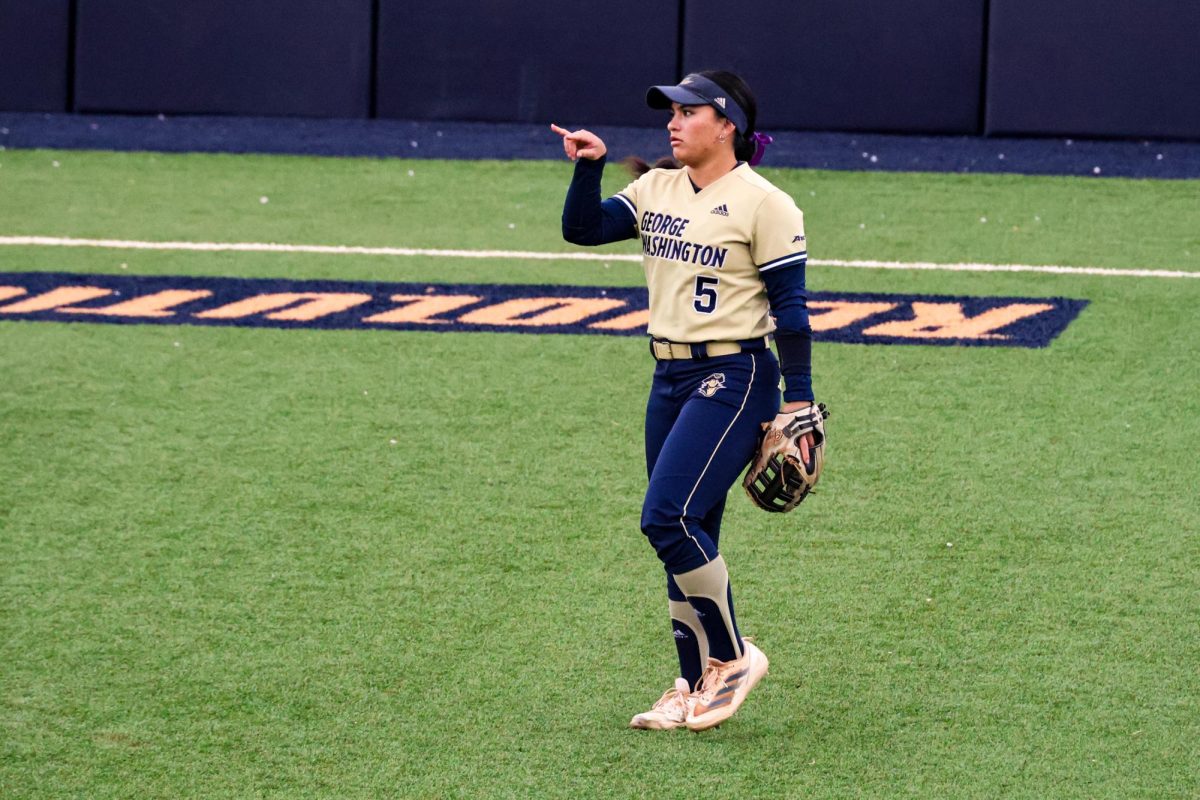Sophomore Cheyenne Moore spent last year practicing every day with the GW men’s basketball team, doing all of the lifting and conditioning drills that go along with being part of an upper-echelon Division I men’s basketball program.
The team was ranked sixth in the country and his teammates were treated as heroes on campus, but Moore sometimes felt left out. The Baltimore native was not allowed to play in games or accompany the team on road trips because, as a transfer from Clemson, he was required by the NCAA to sit out a year.
“Sometimes I felt like I was part of the team, sometimes not,” Moore said. “When they left for road trips, I was left here sitting in my room.”
Moore came to GW after leaving Clemson because he wanted to move closer to his family and did not like the school’s rural South Carolina campus.
Transfers have played an integral part of head coach Karl Hobbs’ program in recent years, with two players on the current roster, Moore and senior Louisiana State University transfer Regis Koundjia, coming from other programs. Two other players, Virginia Tech transfer Wynton Witherspoon and Central Connecticut State University transfer Jermaine Middleton, are sitting out this season.
GW is a popular destination for recruits who are not seeing minutes at larger programs and like to play the up-tempo style that the Colonials is known for, Hobbs said.
“We get calls here constantly about kids who want to come here, but very rarely do we have interest,” Hobbs said.
Although Hobbs said that he has “never contacted a player about transferring,” Moore said he received a call from a GW coach asking him to visit soon after telling Clemson about his intentions to leave.
Sitting out a year left Moore in a difficult situation where he had a tough time feeling motivated, he said. Hobbs said that frustration with having to sit out is natural even though he keeps them involved in “everything” except road trips.
“It’s never hard to keep a guy motivated around here at GW,” Hobbs said.
While transfers make up a significant part of GW’s roster, Hobbs said they do not replace recruiting quality freshmen.
“I don’t think you can build your program (through transfers) or have continued success that way,” Hobbs said. “You still have to get high school guys who grow up in your program and understand the culture of what you’re trying to do.”
Recruiting players to come to GW from other schools is similar to recruiting freshmen, Hobbs said. He added that because GW runs a complicated system, it can be difficult for players to pick up, although the off-year gives them time to learn it. Moore said he has never had a problem learning plays, and GW is no exception.
Other players on the team did a good job of including Moore in social activities and helped him learn about GW basketball, Moore said, but it was still difficult to have to watch them play from the sidelines.
“The hardest part was not being able to play,” Moore said. “I love to play, but I had to watch everybody else on the team playing and having a good time, and I couldn’t do the same.”
Now that he is able to play, Moore can help Middleton and Witherspoon during their years off. After all, he knows better than anyone what they are going through.







